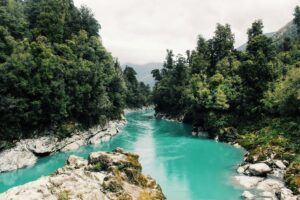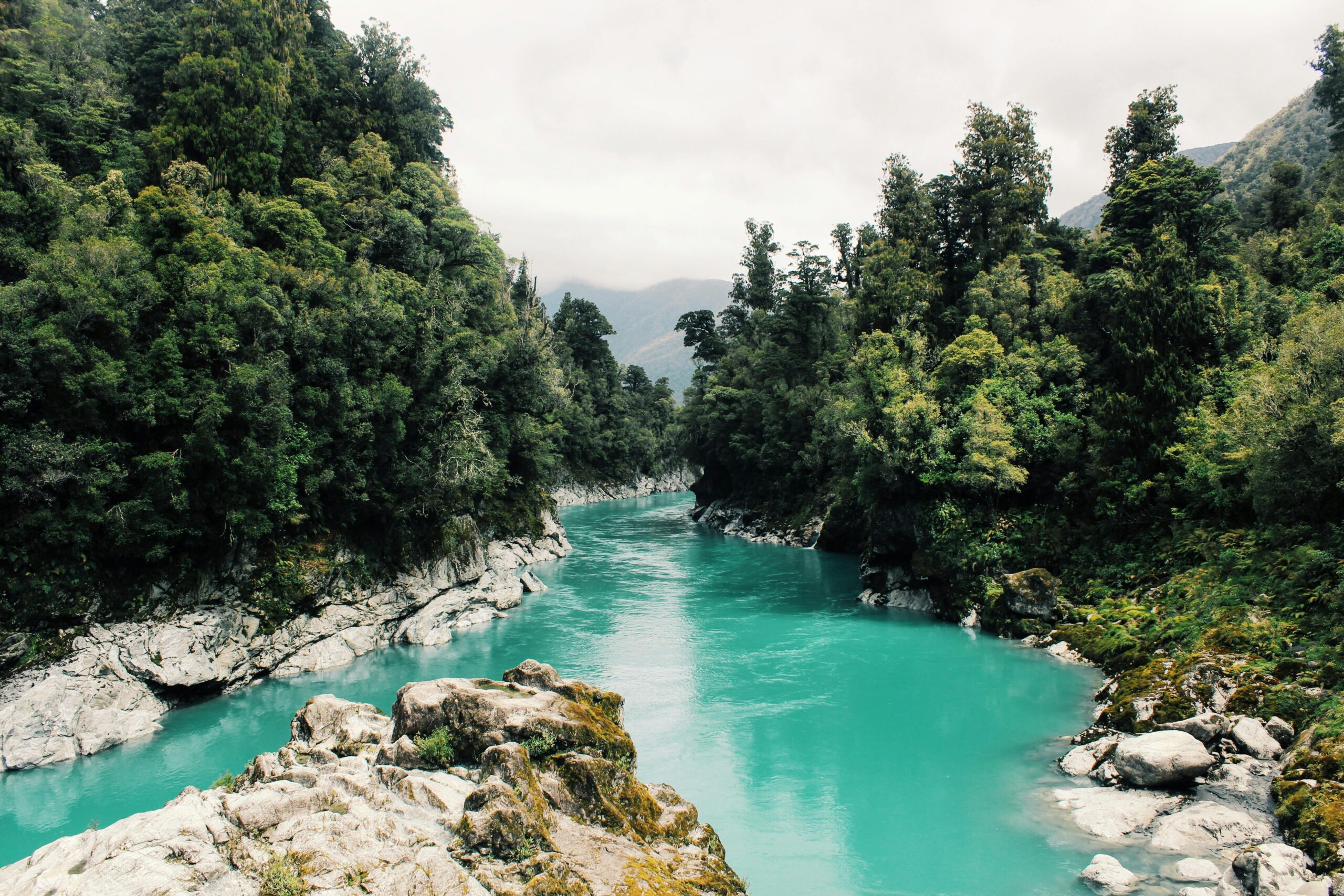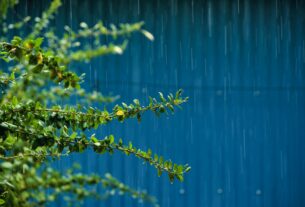Rivers, often seen as simple channels of flowing water, are actually complex networks that weave together diverse ecosystems. From their pristine headwaters high in the mountains to their expansive deltas where they meet the sea, river systems form intricate web-like connections with the environments they traverse. This interconnectedness is crucial for maintaining the health and functionality of both the rivers themselves and the myriad ecosystems they support.
The journey of a river is not just a path of water but a dynamic process that shapes and is shaped by its surroundings. Headwaters, with their cold, clear waters, foster specialized life forms that depend on the unique conditions of these upper reaches. As rivers flow downstream, they encounter diverse landscapes such as floodplains and wetlands, which enhance biodiversity and support a variety of plant and animal species. The final meeting of freshwater with the saltwater of the sea in deltas and estuaries creates some of the most productive and ecologically rich environments on Earth.
Understanding the interconnectedness of river systems and their ecosystems reveals how each component—whether it be a remote headwater stream or a bustling estuary—plays a vital role in sustaining the entire network. The health of a river system is inherently tied to the well-being of the ecosystems along its course, from its source to its mouth. Recognizing and preserving these connections is essential for protecting the intricate balance of life that depends on these flowing waters.

(pexels.com)
Headwaters and Riparian Zones: The Foundation
(Headwaters: The Vital Beginnings)
Headwaters represent the critical and often most pristine beginnings of river systems. Typically originating from springs, snowmelt, or rainfall in high-altitude or mountainous regions, these sources mark the initial stages of river formation. Characterized by cold, fast-moving waters, headwaters create a unique and dynamic environment that supports a specialized array of organisms. The strength and clarity of these waters are ideal for species that thrive in such conditions, including insects like mayflies, stoneflies, and caddisflies. These aquatic insects are not only essential indicators of water quality but also pivotal components of aquatic food webs. Their presence is a strong signal of well-oxygenated, clean waters and a healthy, functioning ecosystem.
Headwaters play a crucial role beyond supporting specific wildlife; they are instrumental in shaping the chemical and physical properties of the river as a whole. As they traverse various landscapes, headwaters collect and transport nutrients, sediments, and organic matter, which profoundly influence downstream water quality and ecosystem dynamics. This initial stretch of the river sets the stage for the broader ecological processes that unfold as the river progresses, playing a foundational role in establishing the health and stability of the entire river system.
(Riparian Zones: Essential Buffers and Habitats)
Riparian zones are the strips of vegetation that line the banks of rivers and streams, and they are fundamental in maintaining the health and stability of river ecosystems. These vegetated areas serve as natural buffers, playing a key role in stabilizing riverbanks and mitigating erosion caused by water flow and human activities. The root systems of plants such as willows, alders, and cottonwoods are particularly effective in binding the soil, thereby preventing sediment from entering the water. This natural process helps maintain water quality by reducing sedimentation and nutrient runoff.
In addition to their role in preventing erosion, riparian vegetation performs several vital ecological functions. By providing shade, it helps regulate water temperatures, which is critical for the survival of temperature-sensitive species like trout and salmon. This shading effect also plays a crucial role in moderating the growth of aquatic plants and algae. Without this natural canopy, excessive growth of these organisms could occur, leading to decreased water quality and negative impacts on aquatic habitats.
Riparian zones also serve as essential corridors for wildlife, offering habitat and resources for a diverse array of species. Birds such as kingfishers, herons, and various songbirds find food and nesting sites in these areas. Mammals like otters, beavers, and deer utilize riparian zones for foraging, shelter, and protection. Amphibians, including frogs and newts, depend on these environments for breeding and development, benefiting from the moist, sheltered conditions that riparian zones provide.
(Interconnectedness of Headwaters and Riparian Zones)
The ecological health of headwaters and riparian zones is deeply interconnected with the broader river system. The health and integrity of these foundational areas have far-reaching impacts downstream, influencing water quality, habitat availability, and the overall functioning of the river ecosystem. Changes or disturbances in headwaters or riparian zones can have cascading effects throughout the entire river system, affecting not only the immediate areas but also the ecological balance and resilience of the river as a whole.
Therefore, preserving and restoring headwaters and riparian zones is crucial for maintaining the integrity and sustainability of river ecosystems. Effective conservation efforts in these critical areas are essential for ensuring the continued health and resilience of river systems, highlighting the importance of protecting these vital components for the benefit of the entire ecosystem. The health of headwaters and riparian zones directly affects the sustainability of the river system, underscoring the need for ongoing vigilance and stewardship to safeguard these vital ecological resources.
Middle Reaches: Ecosystem Complexity and Productivity
(Transition from Headwaters to Middle Reaches)
As rivers flow from their pristine headwaters, they evolve into the more intricate and diverse ecosystems characteristic of the middle reaches. This transition represents a significant transformation in the river’s journey, where the environment becomes increasingly complex and productive. The middle reaches are distinguished by meandering channels, expansive floodplains, and vital wetlands. These features contribute to the river’s ecological richness, providing a multitude of habitats that support a broad array of species and fostering high levels of biological productivity.
(Floodplains: Natural Sponges and Biodiversity Hotspots)
Floodplains are a prominent and highly significant feature of the middle reaches. These extensive, low-lying areas adjacent to river channels play several critical roles within the river ecosystem. During periods of high water flow, floodplains act as natural sponges, absorbing excess water and gradually releasing it back into the river system. This natural buffering function is essential for reducing flood risks downstream, preventing potential damage to human infrastructure and natural habitats. Additionally, floodplains are rich in nutrients due to the periodic deposition of sediments and organic matter carried by floodwaters. This nutrient enrichment supports vigorous plant growth, including diverse vegetation such as cattails, reeds, and various aquatic grasses. The lush vegetation in floodplains creates a vibrant and dynamic ecosystem that supports a wide range of herbivores, invertebrates, and other wildlife. These herbivores and invertebrates, in turn, serve as a food source for higher trophic levels, including various fish and bird species, contributing to the overall biodiversity and complexity of the river system.
(Wetlands: Essential for Nutrient Cycling and Habitat Provision)
Wetlands within the middle reaches, such as marshes and swamps, are crucial for maintaining the ecological health and functionality of river systems. These areas serve as natural filtration systems, trapping sediments and absorbing excess nutrients like nitrogen and phosphorus that might otherwise degrade water quality. By performing this vital function, wetlands help prevent problems such as nutrient overload and algal blooms, which can have detrimental effects on aquatic ecosystems. Additionally, wetlands play a key role in nutrient cycling, transforming and recycling organic and inorganic materials that contribute to the health of the entire river system.
Wetlands also provide critical habitats for a diverse range of species. Amphibians, including frogs and newts, rely on these moist, sheltered environments for their breeding and developmental stages. The protected conditions of wetlands are ideal for amphibian reproduction, offering safe breeding grounds and ample resources for growth. In addition to amphibians, wetlands support a wide variety of other wildlife, including birds, insects, and small mammals. These animals utilize wetlands for food, shelter, and breeding, benefiting from the rich and diverse habitats provided by these environments.
(Interconnected Ecosystems: Importance of Middle Reaches)
The middle reaches of a river system are integral to the overall health and sustainability of the river. The interplay between floodplains, wetlands, and the river channel creates a highly productive and diverse ecosystem that supports a broad spectrum of life forms. This interconnectedness enhances the river’s ecological complexity and resilience, enabling the system to adapt to environmental changes and disturbances. The dynamic interactions within the middle reaches contribute to the river’s ability to maintain water quality, support biodiversity, and provide ecosystem services. Protecting and preserving these critical areas is essential for ensuring the long-term health and functionality of river systems. Effective conservation efforts in the middle reaches are vital for maintaining the integrity of the river ecosystem, underscoring the importance of safeguarding these valuable components for the benefit of both ecological and human communities.
Deltas and Estuaries: Confluence of Freshwater and Marine Systems
(Formation and Characteristics of Deltas and Estuaries)
At their mouths, rivers create distinctive and ecologically significant landscapes known as deltas and estuaries, where freshwater from the river meets and mixes with the saltwater of the ocean. These transitional zones are characterized by their dynamic nature and high levels of biological productivity. The process of sediment deposition as rivers slow down and spread out into these areas results in the formation of deltas. Estuaries, on the other hand, are partially enclosed coastal water bodies where the mixing of river water and seawater occurs. This confluence creates brackish water conditions that are crucial for the high nutrient levels and diverse habitats found in these regions. The interaction between freshwater and marine systems results in a rich mosaic of habitats that supports a wide range of species, making deltas and estuaries some of the most productive ecosystems on Earth.
(Key Features and Ecological Roles)
Mangroves are an essential feature of many delta and estuarine systems, particularly in tropical and subtropical regions. These coastal trees and shrubs thrive in the saline intertidal zones, where they play a critical role in coastal protection and ecological stability. Mangrove forests are vital breeding and nursery grounds for numerous fish species, offering a safe haven for juvenile fish and other marine organisms to grow and develop. The intricate root systems of mangroves help stabilize sediments, reducing coastal erosion and shielding shorelines from the impacts of storm surges and high waves. By trapping and binding sediments, mangroves also improve water clarity and reduce the impact of sedimentation on coral reefs and seagrass beds further offshore.
Salt marshes are another key component of estuarine and delta ecosystems. These wetlands are dominated by salt-tolerant grasses and other vegetation that thrive in the brackish conditions of intertidal areas. Salt marshes provide a wide range of ecological benefits, including water filtration, nutrient cycling, and flood mitigation. They act as natural filters by trapping and breaking down pollutants from runoff, which improves water quality and protects downstream aquatic environments. Additionally, salt marshes offer critical habitat for a variety of bird species, including shorebirds, waterfowl, and migratory species, which rely on these areas for breeding, nesting, and foraging.
Mudflats are another vital feature found in the intertidal zones of deltas and estuaries. These soft, sediment-rich areas are exposed at low tide and are characterized by their abundance of invertebrates such as clams, worms, and crustaceans. Mudflats serve as essential feeding grounds for migratory birds, providing a rich source of food that is crucial for their energy needs during long-distance flights. The diversity of invertebrates in mudflats supports a complex food web, with numerous species relying on these areas for sustenance and survival.
(Ecological Importance and Conservation)
The unique interaction between freshwater and marine environments in deltas and estuaries creates a diverse and productive habitat mosaic. This diversity is vital for supporting species that are adapted to varying salinities and environmental conditions. The high productivity of these areas fosters complex and resilient food webs, which are essential for the health of both freshwater and marine ecosystems. The ecological services provided by deltas and estuaries, such as water purification, flood control, and habitat provision, underscore their importance to both natural systems and human communities.
However, these vital areas face significant threats from human activities such as coastal development, pollution, and climate change. Land reclamation, industrial activities, and agricultural runoff can lead to habitat loss, water quality degradation, and disruption of ecological processes. Climate change impacts, including rising sea levels and increased storm intensity, further exacerbate these challenges. Effective conservation and management strategies are crucial to protect and sustain deltas and estuaries. This includes implementing measures to reduce pollution, restore degraded habitats, and address the impacts of climate change. By safeguarding these critical ecosystems, we ensure the continued health and functionality of both freshwater and marine environments, emphasizing the importance of maintaining the delicate balance within these interconnected systems.
Challenges and Conservation Efforts
(Threats to River Systems)
Human activities pose significant and multifaceted threats to river systems and their associated ecosystems. Pollution from various sources, including agriculture, industry, and urban areas, introduces harmful substances into rivers, leading to severe degradation of water quality. Agricultural runoff often carries pesticides and fertilizers, which contribute to eutrophication. Eutrophication is characterized by excessive nutrient enrichment in the water, which stimulates rapid growth of algae. These algal blooms deplete oxygen levels in the water as they decompose, leading to hypoxic conditions that severely impact fish and other aquatic life. This process disrupts the entire aquatic food web, affecting species diversity and ecosystem health.
Dams and river alterations are another major challenge for river systems. The construction of dams and other modifications to river channels disrupt natural flow patterns, which can alter sediment transport and change habitats. This disruption affects the spawning and migration of fish species, such as salmon, which rely on uninterrupted river flow to complete their life cycles. Additionally, the alteration of river channels can reduce floodplain connectivity, diminishing the ability of these areas to absorb floodwaters and maintain their ecological functions.
Climate change exacerbates these issues by influencing various environmental factors. Changes in precipitation patterns can lead to more frequent and severe floods or droughts, impacting river flow and water availability. Increased temperatures can affect water quality and the health of aquatic species, while extreme weather events, such as heavy storms and prolonged heatwaves, can further stress river systems and their ecosystems.
(Comprehensive Conservation Strategies)
Addressing the complex challenges faced by river systems requires a multifaceted approach that includes several key conservation strategies:
1. Restoring Riparian Buffers: Planting native vegetation along riverbanks is essential for enhancing water filtration and providing habitat for wildlife. Riparian buffers help stabilize riverbanks, reduce erosion, and filter out pollutants before they enter the water. Restoring these vegetated areas can improve water quality, support diverse plant and animal species, and contribute to the overall health of the river ecosystem.
2. Implementing Sustainable Agriculture: Adopting sustainable agricultural practices is crucial for reducing runoff and minimizing the impact of farming on river systems. This includes the use of buffer strips, which are areas of vegetation planted between agricultural fields and waterways to capture and filter runoff. Other practices involve reducing pesticide use, employing integrated pest management techniques, and improving soil management to enhance water retention and reduce erosion.
3. Enhancing River Connectivity: Restoring natural river flow patterns is vital for the health of river ecosystems. This can be achieved by removing or modifying dams and other barriers that obstruct fish migrations and disrupt sediment transport. Implementing fish ladders or bypass channels can help facilitate the movement of aquatic species and restore ecological processes.
4. Protecting Wetlands and Floodplains: Preserving wetlands and floodplains is essential for maintaining their ecological functions. These areas provide critical habitat for wildlife, support nutrient cycling, and mitigate flood risks. Conservation efforts should focus on protecting existing wetlands and floodplains from development and degradation, as well as restoring degraded areas to improve their ecological health.
5. Monitoring and Regulation: Effective monitoring and regulation are necessary to ensure compliance with water quality standards and to prevent further pollution. Enforcing regulations that limit pollutant discharge, promote responsible land use, and protect water resources can help mitigate the impact of human activities on river systems.
By prioritizing and implementing these conservation measures, we can enhance the health and resilience of river systems and the ecosystems they support. A coordinated effort involving government agencies, non-governmental organizations, communities, and stakeholders is essential for addressing the challenges faced by river systems and ensuring their sustainability for future generations.
Conclusion,
The intricate network of river systems and their associated ecosystems forms a vital tapestry of life, where every element is interconnected and interdependent. From the headwaters that nurture specialized species to the expansive deltas and estuaries that teem with life, each segment of a river system contributes to the overall health and functionality of the environment. The journey of a river, shaped by natural processes and human influences, underscores the importance of preserving these critical connections.
Addressing the challenges faced by river systems, such as pollution, habitat loss, and climate change, requires a comprehensive approach that recognizes and respects these ecological interconnections. By implementing effective conservation strategies—restoring riparian buffers, promoting sustainable agriculture, enhancing river connectivity, protecting wetlands and floodplains, and enforcing regulations—we can help safeguard the integrity of these vital ecosystems.
In safeguarding river systems, we are not only protecting the diverse life forms that inhabit them but also ensuring the resilience and sustainability of the broader environmental landscape. The health of our rivers is a reflection of our commitment to preserving the natural world and maintaining the delicate balance that supports life. By fostering a deeper understanding of the interconnectedness of river systems and their ecosystems, we can work towards a future where these vital resources continue to thrive and support the myriad forms of life that depend on them.



